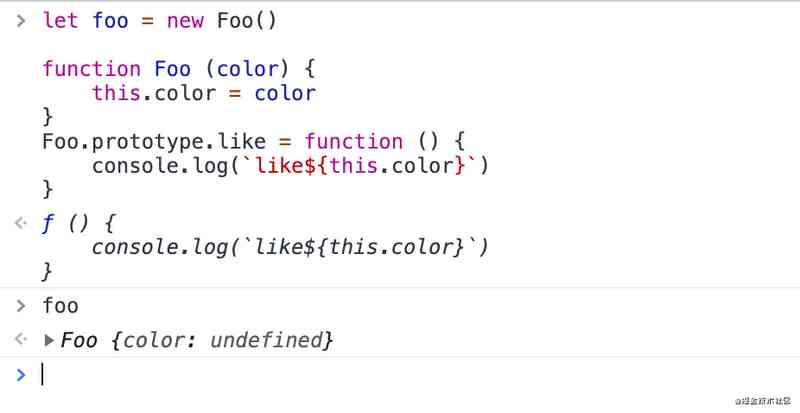当前位置:网站首页>The difference between gbdt and XGB, and the mathematical derivation of gradient descent method and Newton method
The difference between gbdt and XGB, and the mathematical derivation of gradient descent method and Newton method
2020-11-06 01:28:00 【Elementary school students in IT field】
Why the gradient descent method and Newton method are introduced ?
Two algorithms are mentioned here GBDT and XGBoost, All two are boosting Model .
GBDT and xgb The objective function of is different , At the same time, aiming at the error function in the objective function L(θ) There are also differences in the way of fitting :
- GBDT Let's use the first order Taylor expansion to expand two terms , Make an approximation
- xgboost Let's use the second order Taylor expansion to expand the three terms , Make an approximation
Words mean , - GBDT The gradient descent method is used to optimize in function space
- XGBoost Using Newton's method to optimize in function space
The final objective function only depends on the first and second derivatives of each data point on the error function .
The error function can be customized , Let's say the square loss function : ( y i , y i ) = ( y i − y i ) 2 (yi,y^i) = (yi−y^i)2 (yi,yi)=(yi−yi)2, or logistic Loss function
More introductions and suggestions to listen to :https://study.163.com/course/courseMain.htm?courseId=1006401020&share=2&shareId=400000000645014
1. The derivation of the gradient descent method
Gradient descent method is widely used in machine learning and deep learning , The general course or textbook will explain the gradient descent method in a visualized way ( Quadratic curve 、 Lower convex surface, etc ), I think we all know how to use visualization to illustrate the effectiveness of gradient descent method . here , I'm not going to repeat this kind of figurative explanation . I use mathematical derivation to prove the effectiveness of the gradient descent method .
We should all know the Taylor expansion of function of one variable , The formula is as follows :
f ( x ) = f ( x 0 ) + f ’ ( x 0 ) 1 ! ( x − x 0 ) + f ’ ’ ( x 0 ) 2 ! ( x − x 0 ) 2 + f ’ ’ ’ ( x 0 ) 3 ! ( x − x 0 ) 3 + … f(x)=f(x_0)+\frac{f’(x_0)}{1!}(x-x_0)+\frac{f’’(x_0)}{2!}(x-x_0)^2+\frac{f’’’(x_0)}{3!}(x-x_0)^3+… f(x)=f(x0)+1!f’(x0)(x−x0)+2!f’’(x0)(x−x0)2+3!f’’’(x0)(x−x0)3+…
Let's just take the first two terms of the formula on the right , That's one “ About equal to ” Result :
f ( x ) = f ( x 0 ) + f ’ ( x 0 ) 1 ! ( x − x 0 ) f(x)=f(x_0)+\frac{f’(x_0)}{1!}(x-x_0) f(x)=f(x0)+1!f’(x0)(x−x0)
remember : Δ x = x − x 0 \Delta x=x-x_0 Δx=x−x0, The above formula becomes :
f ( x ) = f ( x 0 ) + f ’ ( x 0 ) 1 ! Δ x f(x)=f(x_0)+\frac{f’(x_0)}{1!}\Delta x f(x)=f(x0)+1!f’(x0)Δx
Our goal is to make the following equation hold in the iterative process , In other words, it is hoped that the function value will gradually decrease during the iteration process , To describe in mathematical language is : f ( x n + 1 ) ≤ f ( x n ) f(x_{n+1})\leq f(x_{n}) f(xn+1)≤f(xn)
Easy to think of , It should be constructed :
Δ x = − f ’ ( x 0 ) \Delta x=-f’(x_0) Δx=−f’(x0)
here :
f ( x ) = f ( x 0 ) − f ’ ( x 0 ) 2 f(x)=f(x_0)-f’(x_0)^2 f(x)=f(x0)−f’(x0)2
Write it in iterative form :
f ( x n + 1 ) = f ( x n ) − f ’ ( x n ) 2 f(x_{n+1})=f(x_{n})-f’(x_{n})^2 f(xn+1)=f(xn)−f’(xn)2
because f ’ ( x ) 2 ≥ 0 f’(x)^2\geq 0 f’(x)2≥0, We have completed the proof of the effectiveness of gradient descent . The formula of parameter iterative updating summarized from the above steps is as follows :
f ( x n + 1 ) = f ( x n ) − f ’ ( x n ) 2 f(x_{n+1})=f(x_{n})-f’(x_{n})^2 f(xn+1)=f(xn)−f’(xn)2
The above steps prove the effectiveness of gradient descent on a function of one variable . It is easy to generalize to multivariate functions . in addition , In multivariate functions , It can also be added that the gradient direction is the fastest direction of descent .
See : You know Why does gradient descent find a minimum ?
2. Newton method
That's the gradient descent method , By the way, the derivation of Newton's method . Because Newton's method is also derived from Taylor expansion .
Keep watching Taylor unfold :
f ( x ) = f ( x 0 ) + f ’ ( x 0 ) 1 ! ( x − x 0 ) + f ’ ’ ( x 0 ) 2 ! ( x − x 0 ) 2 + f ’ ’ ’ ( x 0 ) 3 ! ( x − x 0 ) 3 + … f(x)=f(x_0)+\frac{f’(x_0)}{1!}(x-x_0)+\frac{f’’(x_0)}{2!}(x-x_0)^2+\frac{f’’’(x_0)}{3!}(x-x_0)^3+… f(x)=f(x0)+1!f’(x0)(x−x0)+2!f’’(x0)(x−x0)2+3!f’’’(x0)(x−x0)3+…
still , Let's take the right front 2 term :
f ( x ) = f ( x 0 ) + f ’ ( x 0 ) 1 ! ( x − x 0 ) f(x)=f(x_0)+\frac{f’(x_0)}{1!}(x-x_0) f(x)=f(x0)+1!f’(x0)(x−x0)
Take derivatives on both sides of the equation :
f ’ ( x ) = f ’ ( x 0 ) + f ’ ’ ( x 0 ) 1 ! ( x − x 0 ) f’(x)=f’(x_0)+\frac{f’’(x_0)}{1!}(x-x_0) f’(x)=f’(x0)+1!f’’(x0)(x−x0)
f ’ ( x ) = f ’ ( x 0 ) + f ’ ’ ( x 0 ) 1 ! Δ x f’(x)=f’(x_0)+\frac{f’’(x_0)}{1!}\Delta x f’(x)=f’(x0)+1!f’’(x0)Δx
According to the nature of calculus , f ( x ) f(x) f(x) When you take the minimum , Yes f ’ ( x ) = 0 f’(x)=0 f’(x)=0, Let's put this property into the equation above , Yes :
0 = f ’ ( x 0 ) + f ’ ’ ( x 0 ) 1 ! Δ x 0=f’(x_0)+\frac{f’’(x_0)}{1!}\Delta x 0=f’(x0)+1!f’’(x0)Δx
Δ x = − f ’ ( x 0 ) f ’ ’ ( x 0 ) \Delta x=-\frac{f’(x_0)}{f’’(x_0)} Δx=−f’’(x0)f’(x0)
In this way, we get the parameter iterative updating formula of Newton method as follows :
x n + 1 = x n − f ’ ( x n ) f ’ ’ ( x n ) x_{n+1}=x_{n}-\frac{f’(x_n)}{f’’(x_n)} xn+1=xn−f’’(xn)f’(xn)
3. The difference between the gradient descent method and Newton's method
From the above proof process, we can see that , Although both gradient descent method and Newton method can be derived by Taylor expansion , But there's a little bit of a difference in the way the reasoning is based .
In practice , Newton method and gradient descent method are widely used in machine learning . The difference between the two is actually written in many blogs , such as : gradient descent or Quasi Newton method ?
4. Quasi Newton method
In the parameter iterative updating formula of Newton method above , We can see f ’ ’ ( x 0 ) f’’(x_0) f’’(x0) It's in the denominator . remember , The mathematical derivation above is a function of one variable , For multivariate functions , The existence of this denominator is equivalent to calculating Hessian The inverse of the matrix , It's very difficult and time-consuming . therefore , Many variations of Newton's algorithm have appeared , This kind of deformation is called quasi Newton algorithm .BFGS It's an iterative method to approximate the Hessian matrix . and BFGS We need to store the approximate Hessian matrix , So there's an improved version L-BFGS.

版权声明
本文为[Elementary school students in IT field]所创,转载请带上原文链接,感谢
边栏推荐
- Free patent download tutorial (HowNet, Espacenet)
- 合约交易系统开发|智能合约交易平台搭建
- 零基础打造一款属于自己的网页搜索引擎
- How long does it take you to work out an object-oriented programming interview question from Ali school?
- Do not understand UML class diagram? Take a look at this edition of rural love class diagram, a learn!
- ES6学习笔记(二):教你玩转类的继承和类的对象
- 2018中国云厂商TOP5:阿里云、腾讯云、AWS、电信、联通 ...
- Vite + TS quickly build vue3 project and introduce related features
- htmlcss
- Did you blog today?
猜你喜欢

I think it is necessary to write a general idempotent component

前端基础牢记的一些操作-Github仓库管理

100元扫货阿里云是怎样的体验?

The difference between Es5 class and ES6 class

至联云解析:IPFS/Filecoin挖矿为什么这么难?

从海外进军中国,Rancher要执容器云市场牛耳 | 爱分析调研

一篇文章带你了解CSS 分页实例

Recommendation system based on deep learning

华为云“四个可靠”的方法论

一篇文章教会你使用Python网络爬虫下载酷狗音乐
随机推荐
Natural language processing - wrong word recognition (based on Python) kenlm, pycorrector
Installing the consult cluster
[actual combat of flutter] pubspec.yaml Configuration file details
The data of pandas was scrambled and the training machine and testing machine set were selected
If PPT is drawn like this, can the defense of work report be passed?
Just now, I popularized two unique skills of login to Xuemei
TRON智能钱包PHP开发包【零TRX归集】
一篇文章带你了解CSS 渐变知识
钻石标准--Diamond Standard
一篇文章带你了解HTML表格及其主要属性介绍
html
Summary of common string algorithms
在大规模 Kubernetes 集群上实现高 SLO 的方法
零基础打造一款属于自己的网页搜索引擎
一篇文章教会你使用HTML5 SVG 标签
比特币一度突破14000美元,即将面临美国大选考验
Vite + TS quickly build vue3 project and introduce related features
6.1.2 handlermapping mapping processor (2) (in-depth analysis of SSM and project practice)
使用 Iceberg on Kubernetes 打造新一代云原生数据湖
小程序入门到精通(二):了解小程序开发4个重要文件